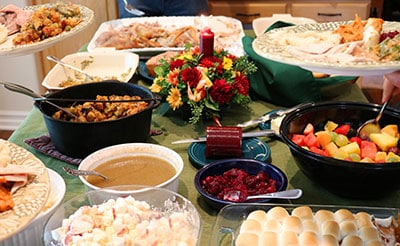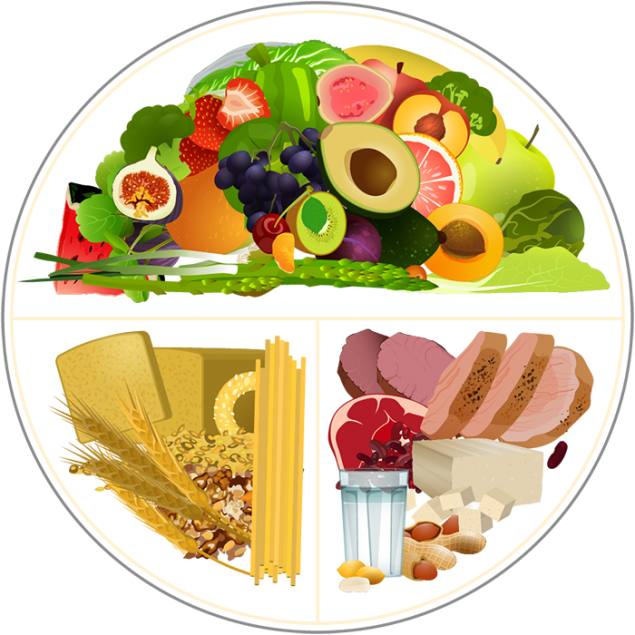Choosing Healthy Foods on Holidays and Special Occasions
Buffet Table Tips for People With Diabetes

Barbecues, picnics, potlucks, and family reunions are gatherings to enjoy and treasure. But if you have diabetes, these events can pose special challenges. How can you stick with your meal plan, yet join in the celebration and have some fun? You can do it! If you choose wisely and watch how much you eat, you can have a delicious meal and feel good, too. So, grab your plate and head for the buffet table.
When You Go
- Plan ahead. Before you go, think about the foods that might be served. Decide which foods will help keep your blood sugar under control and which foods you want to avoid.
- Check out all that’s offered on the buffet. Before you serve yourself, look at all the options first, then choose one or two favorite treats along with healthier items to round out your meal.
- Watch your portions. Many of your favorite foods may have a lot of fat, sugar, or salt. Take very small portions of deep-fried foods, fatty foods like bacon or pork, cheesy foods, and desserts.
- Come prepared. If possible, bring a low-fat main dish so you’ll have something healthy to eat. Let people know what ingredients you used. This will be helpful for your friends and family members who are also trying to watch what they eat.
- Focus on family and friends instead of the food. One trip to the buffet table may be enough if enjoying the company of your loved ones is the focus of the day.
Vegetables
- Fill ½ of your plate with colorful, non-starchy vegetables, such as broccoli, bell peppers, green beans, carrots, cabbage, eggplant, and spinach.
- Choose fresh or steamed vegetables that are light on salad dressing, cheese, or cream. If you can, make your own dressing for salads with a little olive oil and vinegar.
- Watch out for vegetable dishes loaded with butter and cheese, like casseroles and vegetables with sauce.
- Take just a taste of vegetable dishes cooked with fats like lard or high-fat meats such as ham hocks or pork belly.
Grains and Starches
- Take only as much grain or starchy vegetables, such as rice, bread, potatoes, or green peas, to fill ¼ of your plate.
- Choose high-fiber grains like steamed brown rice and whole-grain breads like whole wheat and cornbread.
- Avoid using butter or margarine on bread, rice, and other grains and starches.
- Take small portions or avoid starches with heavy sauces like macaroni and cheese and potato salad.
Proteins
- Take 2-3 ounces of protein, such as chicken or other lean meat, fish, or bean dishes (like three-bean salad), to fill ¼ of your plate.
- Pick dishes with baked or grilled lean meat (like chicken without the skin or beef with the fat cut off), fish, game, or shrimp.
- Try a turkey burger. And top off your burger or sandwich with fresh veggies and mustard rather than mayonnaise and cheese.
- Take just a taste of meats that are breaded, fried, or cooked with a lot of fat or heavy sauces, like fried chicken or chicken-fried steak.
- Choose protein-rich bean dishes. Chickpeas and black-eyed peas are good choices. But take only small amounts of bean dishes cooked with added sugar and fat.
Sweets
- Choose fresh fruits, such as pears, apples, strawberries, or melons, or a fruit salad without sugar or whipped cream added. Fruit is an excellent source of fiber, vitamins, and minerals.
- Have small servings of foods that are high in sugar and fat, like cookies, cake, cobblers, or pies. Or skip the sweets altogether.
Drinks
- Drink water, unsweetened coffee or tea, or other sugar-free beverages.
- If you drink alcoholic beverages, have no more than one drink a day if you’re a woman and no more than two drinks a day if you’re a man.
- Always eat food when drinking alcohol, and never drink on an empty stomach.
